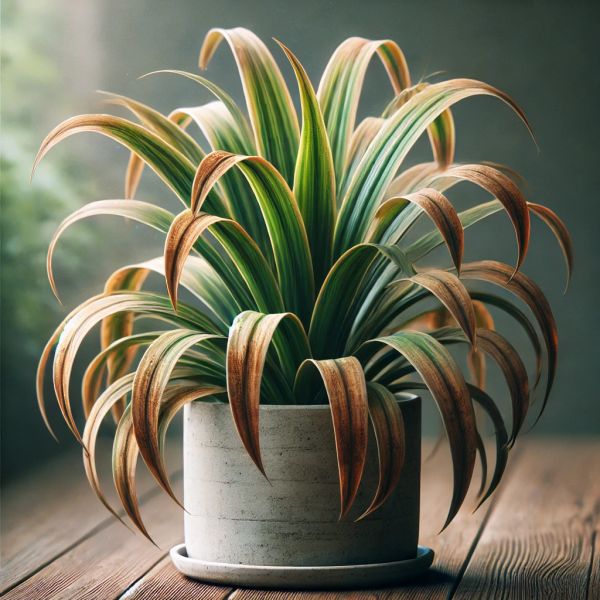Brown or Black Leaf Tips and Edges: Causes & Solutions
Are your plant's leaf tips turning brown or black? Learn the common causes of crispy, burnt edges and how to restore your plant's health.
When leaf tips or edges turn brown or black, it usually signals a problem with watering, humidity, or nutrient balance. Identifying the cause is essential for preventing further damage.

Disclosure: This content includes affiliate links, which means we may earn a commission if you click on a link and make a purchase. As an Amazon Associate, we earn from qualifying purchases. This comes at no extra cost to you and helps offset the cost of running Leafwise. Please read our disclaimer for more info.
Common Causes of Brown or Black Leaf Tips
1. Underwatering
If a plant isn't getting enough water, the edges of its leaves may dry out and turn brown.
- Symptoms: Crispy, dry leaf tips; wilting or drooping leaves.
- How to Diagnose: Check if the soil is dry more than an inch deep.
-
How to Fix It:
- Water the plant thoroughly until moisture reaches the roots.
- Maintain a consistent watering schedule based on the plant's needs. Consider using a plant watering globe or self-watering planter to maintain consistent soil moisture.
2. Low Humidity
Dry air can cause leaf tips to brown, especially in tropical houseplants.
- Symptoms: Brown, brittle tips, particularly on humidity-loving plants like ferns and calatheas.
- How to Diagnose: If your home has dry air (especially in winter), low humidity may be the cause.
-
How to Fix It:
- Increase humidity with a humidifier or pebble tray.
- Mist plants lightly if they tolerate it.
3. Fertilizer Burn (Excess Salts)
Over-fertilizing can cause a buildup of salts in the soil, leading to burnt leaf edges.
- Symptoms: Brown or black leaf tips with a dry, scorched appearance.
- How to Diagnose: If browning worsens after fertilizing, this may be the cause.
-
How to Fix It:
- Flush the soil with water to remove excess fertilizer salts.
- Reduce fertilizer frequency and use a diluted solution.
4. Fluoride or Chemical Sensitivity
Some plants, like Dracaena and Spider plants, are sensitive to fluoride and other chemicals in tap water.
- Symptoms: Brown tips with no other visible damage.
- How to Diagnose: If browning occurs despite proper watering and humidity, chemicals may be the cause.
-
How to Fix It:
- Use filtered or distilled water instead of tap water.
- Allow tap water to sit overnight to let chlorine and fluoride dissipate.
5. Root Damage or Compacted Soil
Poor root health can prevent plants from absorbing water properly, leading to leaf browning.
- Symptoms: Slow growth, brown leaf tips, compacted or hard soil.
- How to Diagnose: Check if roots are bound or soil is too compacted.
-
How to Fix It:
- Repot the plant in fresh, well-draining soil.
- Trim any damaged roots before repotting.
Preventing Brown or Black Leaf Tips
- Water Wisely: Keep soil consistently moist but not soggy.
- Increase Humidity: Use a humidifier or mist plants as needed.
- Fertilize Carefully: Use diluted fertilizer and avoid excessive feeding.
- Use Clean Water: Opt for filtered or distilled water for sensitive plants.
Need More Help?
If your plant's leaves are still browning, try the Leafwise Plant Health Diagnosis Tool for a personalized assessment.
